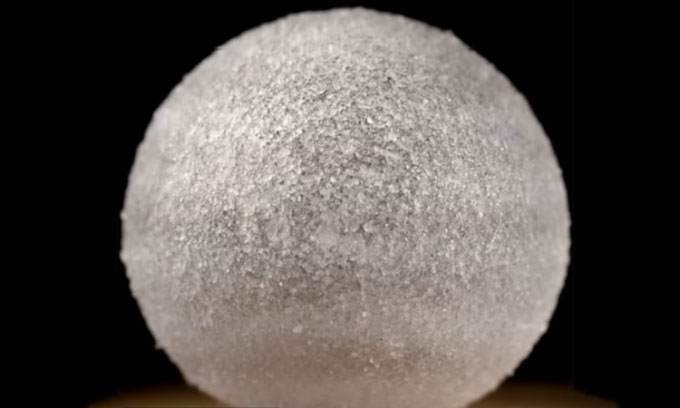Scientists create super durable bubbles that won't burst for 465 days
By adding glycerol and plastic beads, the scientists created ultra-strong bubbles that have potential applications in the drug and food industries.
In research published in the journal Physical Review Fluids on January 18, a team of physicists at the University of Lille, France, show how to make a bubble, which is fragile and fragile, to last for centuries. continent - 465 days.

The team's bubble at the University of Lille is likely to last for more than a year.
According to the team, ordinary soap bubbles only last for a moment due to gravity draining or evaporation of the liquid inside the sphere. However, when they bubbled with a high concentration of glycerol, the compound was effective in preventing premature bubbles from bursting. Glycerol is a compound commonly used in many foods and medicines.
The extended lifespan of the glycerol-water bubbles derives from the stabilizing effect of glycerol. Glycerol has strong chemical pressure with water and can draw water from the air. The team thinks that this water absorption compensates for the evaporation. In addition, the coating of tiny plastic particles also helps prevent water from escaping the bubble shell.
The new research could lead to some practical applications, according to Leif Ristroph, a professor of mathematics at New York University. Ristroph specializes in fluid dynamics and has also studied bubbles. Drug and consumer product researchers are always interested in knowing more about ways to combat evaporation, he said.
"I envision that preventing evaporation could have many practical applications. There is an example right before our eyes that is literally right before our eyes: The tear film covering the eye's surface is extremely thin and will quickly disappear. disappear if it weren't for large molecules called lipids," Ristroph said.
"Maybe I'm daydreaming, but I think it might be helpful to 'protectively wrap' the tiny droplets in an aerosol, helping them stay longer in the air. For example, certain medications are used. by spraying it out and letting the user inhale," he added.
- Scientists create new materials that are as durable as diamond
- Detection of super-durable materials from fire ants
- Bulletproof material new varieties of fish scales?
- Genetically modified bacteria can produce super-durable spider silk for making space suits
- The bubble froze in the sunlight
- Discover China's super-durable sticky rice mortar
- Super durable fabric
- Flexible gel that is 5 times stronger than steel
- Glass smashed without breaking
- Super-durable material from spider silk
- What are opaque foam that appears in the food pot when cooking?
- Discover a strange 'boiling' sea in Siberia
 Vietnam 5th Asian champion on fuel-efficient vehicles
Vietnam 5th Asian champion on fuel-efficient vehicles We can read all NASA studies completely free of charge
We can read all NASA studies completely free of charge Singer and songwriter Bob Dylan won the 2016 Nobel Prize for Literature
Singer and songwriter Bob Dylan won the 2016 Nobel Prize for Literature Scientific revolution in Asia
Scientific revolution in Asia